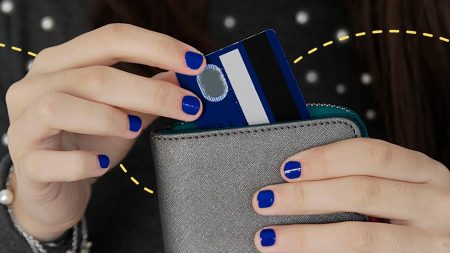Key takeaways
- Using your credit card wisely starts with understanding your card agreement and the rules you must follow to avoid high interest rates, penalties and fees.
- Once you’ve found a card that matches your financial needs and has a card agreement you’re comfortable with, you can start practicing good credit habits — including paying your bills on time, spending within your means and maintaining a good credit utilization ratio.
- To truly get the most out of your credit card, you should also pay attention to any category rewards you could earn and try to pair your card with another one that complements its rewards structure.
Credit cards can be a valuable tool to reaching a wide range of financial goals.
With the right card, you can do everything from fund a large purchase to build your credit score, or even just earn great rewards on everyday spending. Understanding common credit card uses can help you make smart credit choices. If you’re hoping to save money on your next big vacation, for example, earning points and miles with a travel credit card can help.
If you don’t yet have a credit card, think about why you want one and how you plan on using it. Then, you can apply for one that meets your needs.
But you have to be realistic when considering what type of credit card will best suit your spending habits and financial goals — and that starts with checking your credit score and making sure your credit card application is likely to be approved. Bankrate’s free CardMatch tool can quickly match you with credit card prequalification offers without affecting your credit score.
After you’ve chosen the right card for your goals, you’re ready to start maximizing it.
This guide takes you through the steps of using credit wisely, so you can reap the benefits while you avoid the things that could lower your credit score, make it more difficult to earn credit card rewards or lead you on a path toward credit card debt.
1. Learn how to read your credit card statement
A great first step to responsibly using your card is understanding what’s in your monthly statement — or a summary of your card use over a specific billing period. Though they can look different depending on your issuer and whether you’re receiving your bill in the mail or online, important statement details include:
- Your new or current balance. This is the total amount charged to your card. Most statements break it down into your previous balance, payments, credits and any balance transfers or cash advances, as well as any interest you’ve incurred on these charges.
- Your minimum balance due. This is the lowest amount your issuer will accept toward your balance. Your minimum payment can range from 1 percent to 5 percent of your balance, depending on the issuer.
- Your due date. This is the date by which you must pay at least your minimum due to avoid late fees and other penalties. For most cards, your payment is due by 5 p.m. on your due date to avoid late fees and penalties.
Most credit card statements also break down interest charge calculations, as well as any changes to your APR and legal disclosures covering your rights. They also usually provide information on your responsibilities as a cardholder and what to do if you spot fraudulent charges or errors.
2. Understand how your credit card’s interest is calculated
Your annual percentage rate (APR), is the yearly interest rate you’ll pay for charges you carry from month to month. But it’s likely your issuer compounds your interest using a daily periodic rate, or DPR. Your DPR is interest that’s added to your original charges daily over the month of your billing cycle.
The DPR is calculated by dividing your APR by the number of days in a year (or 360 for some issuers). You can calculate your daily interest charges in three steps:
How to calculate daily interest charges
- Find your current statement balance and your APR. Let’s say your statement balance is $1,000 and your APR is 20 percent.
- Divide your APR by 365 to find your daily periodic rate. In this case, 20 percent (or 0.02) divided by 365 would be a DPR of 0.05479 percent (or 0.00055).
- Multiply your current balance by the daily periodic rate. $1,000 multiplied by 0.00055 would equal 55 cents.
Being charged 55 cents per day might not sound like much at first, but it can add up, especially because the interest compounds. Compounding interest works like this: Let’s say your balance on Day 1 is $1,000 and we know your DPR is .00055, which equals 55 cents per day. On Day 2, you balance will be $1,000.55 and your interest charges will be calculated based on that amount — and so on throughout the month.
It’s complicated to calculate compounding interest, but the good news is that it likely won’t affect your total interest owed too much in a given billing cycle. You can just multiply 55 cents by the days in your billing cycle (let’s say 31 days) to get total interest due of about $17.05 in interest for the month in this example.
3. Pay your credit card bills on time
Always make at least your minimum payment each month by your statement’s due date. If you miss a credit card payment, not only could your credit score take a hit, but you could also get stuck with late fees and penalty APRs. Miss too many payments, and your debt could go to collections.
A better strategy is to pay your credit card bill in full whenever possible to avoid accruing interest and making your purchases more expensive in the long run. If you can’t pay in full, pay off as much as you can by the due date to reduce the balance you’ll pay interest on.
To avoid the chance of missed or late payments, take advantage of your card’s mobile alerts and set up credit card autopay for at least your minimum payment each month.
4. Be aware of any credit card fees
Credit cards come with various types of fees that can sneak up on you, which is why it’s important to read your card agreement. This document outlines the card’s fees, rates and other fine print. Common fees that you’ll see in your card agreement or charged on your statement include:
- Annual fees
- Balance transfer fees
- Cash advance fees
- Foreign transaction fees
- Late payment fees
While some fees depend on how you use your card, others are avoidable entirely if you sign up for a card that doesn’t charge them. You can find cards that specifically charge no annual fees or no foreign transaction fees, for example.
Also keep in mind that your credit card may start off with an introductory APR for a specific period of time. Say you open a credit card that offers a 0 percent introductory APR on balance transfers for 15 months from account opening. After those 15 months, your interest rate will revert to the higher regular APR that will apply to any remaining balance on your card.
5. Keep an eye on your balance and spend only what you can afford
You can build a positive credit history by using your credit card on a regular basis — but be mindful of spending too much of your available credit. Lenders don’t like it when you max out your credit cards, and your FICO and VantageScore credit scores can dip if your balances are too high.
It can be tempting to charge everything to your card and just pay the minimum balance due each month, especially if you’re already dealing with other debts. But doing this will lead to you losing a lot of money to interest payments — not to mention making your financial situation worse with more debt and a lower credit score. To use your card effectively when making purchases, you should only charge what you can afford to pay off in full each month.
In general, it’s also a good rule of thumb to keep your credit utilization ratio below 30 percent. Your credit utilization ratio measures how much of your available credit you’re currently using. For example, if your credit limit is $1,000, you should keep your revolving balance below $300. If you make a purchase that takes your balance above $300, prioritize paying it off as quickly as possible to avoid taking a hit to your credit score. Credit utilization makes up 30 percent of your FICO credit score, so it’s a good idea to keep it in check.
Trying to get rid of your current credit card debt?
If you’re struggling with credit card debt already, consider getting a balance transfer card with a 0 percent introductory APR offer. It will allow you to pay down your transferred balance without paying interest for a set time period. A licensed credit counselor from an accredited nonprofit can also help you create a debt management plan if you need additional help.
6. Improve your credit score
Using a credit card to build good credit habits is among the best ways to improve your credit score. Paying on time and keeping your utilization low helps a lot, but you’ll have the most success if you understand exactly how your credit score is calculated.
Your FICO credit score, for example, is determined using the following five factors:
- Payment history — 35 percent
- Amounts owed — 30 percent
- Length of credit history — 15 percent
- Credit mix — 10 percent
- New credit — 10 percent
Establishing good habits with these five FICO credit score factors in mind can help you build or rebuild your credit score. Examples of good credit habits include:
- Making all of your payments on time.
- Keeping the amounts you owe as low as possible.
- Keeping your credit accounts active so that you build a long — and positive — credit history.
- Applying for different types of credit accounts, such as credit cards, car loans and mortgages, over time.
- Avoiding applying for a lot of new credit at once.
If you practice these habits over time, you’ll show potential lenders that you can use credit wisely, and your responsible credit use will be reflected in your credit score.
7. Earn and redeem credit card rewards
A big benefit of using credit cards is saving money on your purchases. To get the most use out of your credit card, make sure you’re both earning and redeeming all of the credit card rewards available to you.
First, keep track of which purchases earn the most cash back, points or miles on the cards you own. For example, say you have the Blue Cash Everyday® Card from American Express that offers 3 percent cash back at U.S. gas stations, U.S. supermarkets and for U.S. online retail purchases (on up to $6,000 per year in each category, then 1 percent). Each time you make a purchase in one of those categories, you should pay with that credit card to maximize your rewards.
You’ll also want to figure out which redemption options offer the highest value. Many people don’t realize that redeeming credit card rewards for gift cards, for example, is often less valuable than redeeming the same rewards for travel purchases or statement credits.
Every credit card’s rewards structure is different, but once you learn how rewards credit cards work and how you can maximize your credit card rewards, you’ll be able to use your card’s points, miles or cash back to save money on nearly every purchase.
Don’t let your rewards spending lead you to debt
If you focus too hard on earning rewards, however, you could find yourself spending outside of your means, especially if you already carry credit card debt. Nearly 2 in 4 credit card holders (44 percent) are carrying debt from month to month, according to Bankrate’s January 2024 Chasing Rewards in Debt. Of those who are carrying debt from month to month, 67 percent are still trying to maximize their cards by earning credit card rewards.
But chasing credit card rewards while you’re already in debt won’t benefit you in the long run. Any rewards you’ll earn will likely be canceled out by the interest you’re paying each month, which is why earning and redeeming rewards is so far down our list of tips. Before focusing on this aspect, you’ll want to make sure you’re already spending responsibly with your card and paying it off in full as often as possible.
8. Leverage multiple credit cards
Once you know how to use credit wisely, you might want to think about adding a second credit card to your wallet. It can pay to choose a card — or even a few cards — that can complement your everyday credit card. If you have a Chase credit card, for example, adding a second Chase card to your wallet can allow you to pool your Chase Ultimate Rewards and increase your redemption options.
Or, you might want to consider pairing a flat-rate cash back rewards card with a rotating bonus category rewards card, giving you the opportunity to earn high-level rewards on nearly every purchase.
You don’t need to rush to apply for another card immediately, though. In most cases, it’s a good idea to wait three to six months between credit card applications — that way, you won’t risk damaging your credit score with too many applications at once.
Be aware that some credit issuers have restrictions that will limit your ability to apply for new credit or earn welcome bonuses on new cards. Chase’s 5/24 rule, for example, reduces access to cardholders who have taken out more than five credit cards with any issuer in the past 24 months. But, as long as you plan carefully, you can take advantage of some great credit card combinations.
What about your old credit cards?
As you add new cards to your wallet, you might find that you don’t use your old cards as much — or at all. But you’ll want to think twice before canceling unused cards. Those old cards keep your length of credit history looking good, which is important to your credit score. Plus, they can make it easier to keep your credit utilization low. If you don’t want to use a certain card anymore and you’re not paying an annual fee on that card, consider freezing it and putting it somewhere safe instead of canceling it, especially if it was one of your first credit cards.
The bottom line
Want to know how to use a credit card? Start by choosing the right card for your needs. Then, make every payment on time and keep your balances as low as possible. Learn how your credit card use affects your credit score, and work to build a positive credit history. Make sure you also take advantage of all the rewards and perks that come with your credit card — so long as taking advantage of them won’t push you to overspend.
Then, when you’re ready, compare cards to find a second that can help you maximize your rewards.
Read the full article here










